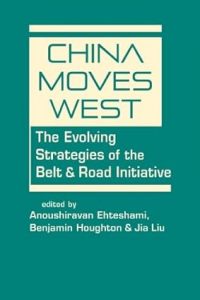 Our Chinese Studies member Monique Taylor just published an open-access article “The Digital Yuan: Purpose, Progress, and Politics” in the Made in China Journal.
Our Chinese Studies member Monique Taylor just published an open-access article “The Digital Yuan: Purpose, Progress, and Politics” in the Made in China Journal.
Central Bank Digital Currencies (CBDC) are gaining momentum globally, offering potential benefits such as enhanced financial inclusion, streamlined payment systems, and crime prevention and detection, while also emerging as a novel instrument for implementing monetary policy. However, there are significant risks associated with digital currencies—notably, cybersecurity threats and ethical dilemmas related to privacy and data protection. The digital yuan is ahead of the curve in navigating some of these opportunities and challenges, with outcomes that are strongly influenced by China’s specific political, economic, and regulatory environments. Through their leading role in digital currency development, the Chinese authorities are helping to establish the foundational principles and architecture of future digital currencies. The results of their digital yuan rollout to date have been mixed, with slow growth in use for domestic retail transactions, mainly due to competition from the popular extant payment platforms, Alipay and WeChat Pay. Also, given the extant trust deficits and liquidity concerns, it seems unlikely that the digital yuan could challenge the dominance of the US dollar in the global financial system any time soon.
_________________________________________________________

Julie Yu-Wen Chen just published a chapter in this new book.
In September 2013, Xi Jinping announced the launch of a Chinese-led megaproject, the Belt and Road Initiative, that would transform Asia’s position within the global economy. Some ten years on, the BRI, while facing significant obstacles, has gone from strength to strength.
How has China’s BRI diplomacy affected its image across Asia? What does the BRI mean for Sino-US competition? Will Russia’s invasion of Ukraine and footprint in the region hinder the BRI’s success? Addressing these questions and more, the authors of China Moves West offer a critical appraisal of how the BRI is progressing, how it is being perceived, and how it is navigating challenges in the geopolitically sensitive regions of Central, South, and West Asia.
CONTENTS:
- Introduction―B. Houghton and A. Ehteshami.
- The Belt and Road Initiative: Asianization Amid China’s Great Revival―A. Ehteshami.
- Conceptualizing Asia in China: The Challenges for BRI Diplomacy―H. Liu.
- Sino-Russian Competition: The Reshaping of Central Asia―G. Sciorati and K. Silvan.
- China’s Changing Image in Central Asia: Exercising Soft and Hard Power―J. Y-W. Chen.
- Geopolitics and Russia: Implications of the Invasion of Ukraine for the BRI―M.N. Katz.
- Sino-Indian Competition: The Development of the China-Pakistan Economic Corridor―J. Garlick.
- China in Afghanistan: The BRI as a Vehicle for Influence―J. Liu.
- The BRI in the GCC States: China’s Route to Regional Predominance?―B. Houghton.
- The BRI in Conflict Zones: The Case of Syria―K.A. Houghton.
- Sino-Iranian Relations: Challenges Facing Beijing and Tehran―J. Scita.
- Türkiye Eyes the BRI: Prospects for China’s Project at the Eurasian Crossroads―D. Göçer and C. Ergenç.
- Israel: Between the United States and China―Y. Shichor.
- China Moves West: Ten Years of the Belt and Road Initiative―H. Fan.
More information can be found here. If you have access to the library of the University of Helsinki, you can read the e-book here.